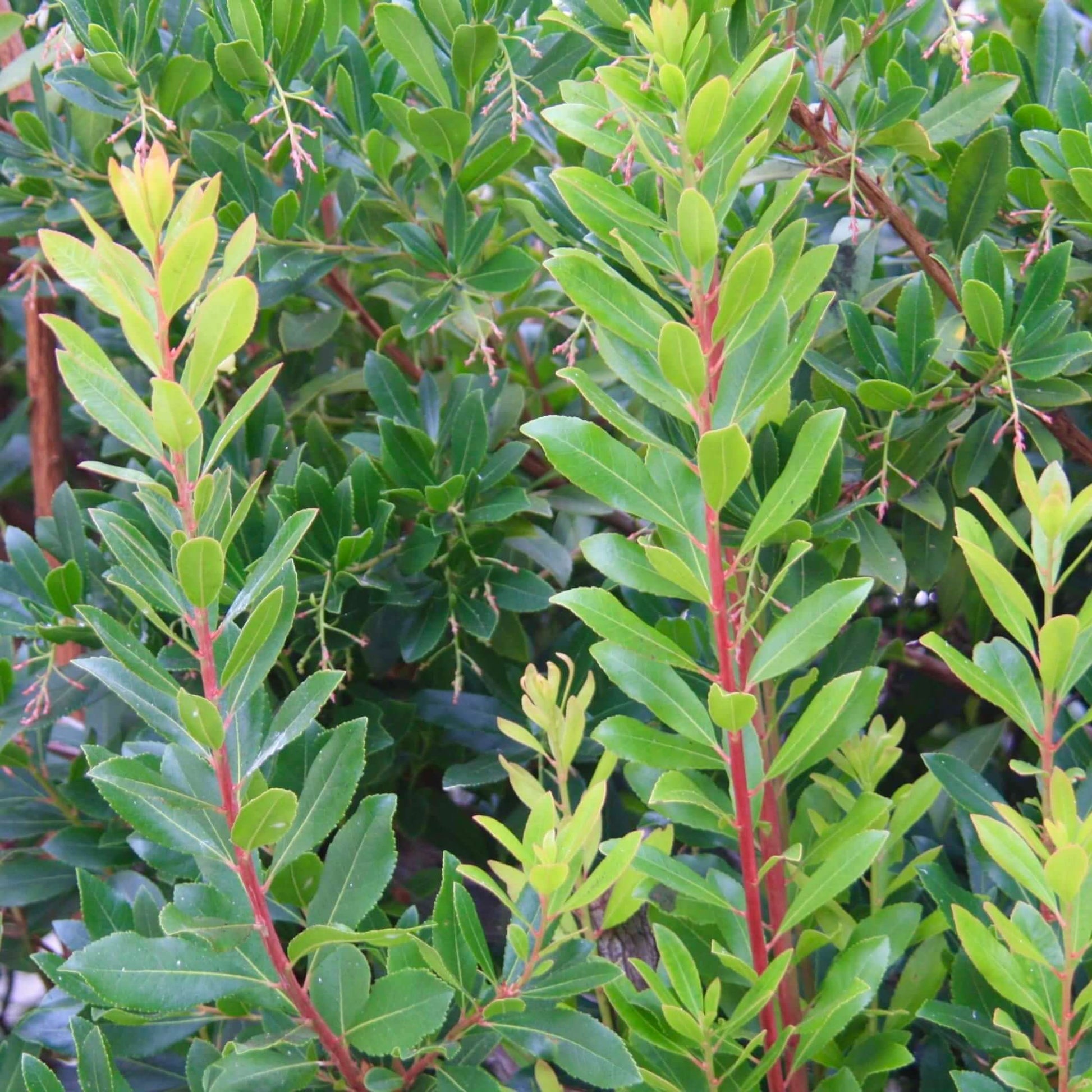
Compact Strawberry Tree
Arbutus unedo 'Compacta'
Delivery
24-hour money-back guarantee
Free delivery on orders over $349
Big Project? Call 888-444-1126 for bulk rates!
Arbutus unedo 'Compacta', a dwarf form of the Strawberry Tree, is naturally bushy with multi-stemmed growth, reaching 6-8 feet tall and 5-9 feet wide—slightly larger with age. This compact form makes an excellent screen, informal hedge, or, with pruning, a small specimen tree.
In California, this evergreen shrub or small tree provides year-round interest. The Compact Strawberry Tree features a profusion of white, urn-shaped blooms from fall through winter, followed by bright red fruits in winter and early spring that resemble strawberries. Its attractive bark, delicate flowers, and unique fruits are best appreciated up close, making it a captivating addition to any garden.
How big does the Compact Strawberry Tree grow?
What kind of light and soil does it prefer?
When does it bloom and fruit?
Are the fruits edible?
6-15 ft.
6-8 ft.
Occassional
Birds, Butterflies
Perfect Your Landscape With Expert Help
Customize your yard with confidence. Schedule your free consultation today and bring your outdoor space to life!



